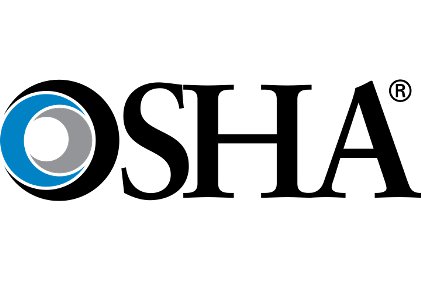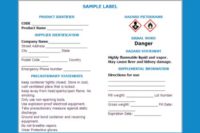 OSHA boss Dr. David Michaels issued a memorandum to reiterate OSHA's policy that employee training required by OSHA standards must be presented in a manner that employees can understand, and to provide enforcement guidance to the area and regional offices relative to the agency's training standards. This position applies to all of the agency's agriculture, construction, general industry, and maritime training requirements.
OSHA boss Dr. David Michaels issued a memorandum to reiterate OSHA's policy that employee training required by OSHA standards must be presented in a manner that employees can understand, and to provide enforcement guidance to the area and regional offices relative to the agency's training standards. This position applies to all of the agency's agriculture, construction, general industry, and maritime training requirements.
Employer's tTraining obligation
Many OSHA standards require that employees receive training so that work will be performed in a safe and healthful manner. Some of these standards require "training" or "instruction," others require "adequate" or "effective" training or instruction, and still others require training "in a manner" or "in language" that is understandable to employees.
It is OSHA’s position that, regardless of the precise regulatory language, the terms "train" and "instruct," as well as other synonyms, mean to present information in a manner that employees receiving it are capable of understanding. This follows from both the purpose of the standards -- providing employees with information that will allow work to be performed in a safe and healthful manner that complies with OSHA requirements -- and the basic definition that implies the information is presented in a manner the recipient is capable of understanding.
OSHA has a long and consistent history of interpreting its standards and other requirements to require employers to present information in a manner that their employees can understand. See, e.g., CPL 2-238(D)(1998) ("[i]f the employees receive job instructions in a language other than English, then training and information to be conveyed under the [hazard communication standard] will also need to be conducted in a foreign language"); letter from Russell B. Swanson to Chip MacDonald (1999) ("instruction that employers must provide under §1926.21 must be tailored to the employees' language and education....").
Courts and the OSH Review Commission have agreed with OSHA that an employer may not take advantage of "an adequately communicated work rule" when it did not communicate that rules to a non-English speaking employee in a language that employee could understand. See, e.g., Modern Continental Construction Company, Inc. v. OSHRC, 305 F.3d 43, 52 (1st Cir. 2002); Star Brite Construction Co., 19 (BNA) OSHC 1687, 1695 n.12 (N. 95-0343, 2001).
In practical terms, this means that an employer must instruct its employees using both a language and vocabulary that the employees can understand.
For example, if an employee does not speak or comprehend English, instruction must be provided in a language the employee can understand. Similarly, if the employee's vocabulary is limited, the training must account for that limitation.
By the same token, if employees are not literate, telling them to read training materials will not satisfy the employer's training obligation.
As a general matter, employers are expected to realize that if they customarily need to communicate work instructions or other workplace information to employees at a certain vocabulary level or in language other than English, they will also need to provide safety and health training to employees in the same manner. Of course, employers may also provide instruction in learning the English language to non-English speaking employees.
Additionally, OSHA's training provisions contain a variety of specific requirements related to employee comprehension. For example, §1910.147(c)(7)(i) (Lockout/Tagout) requires the employer to verify that the employees have "acquired" the knowledge and skills which they have been trained; §1910.134(k)(5)(ii) (Respiratory Protection) requires retraining when "inadequacies in the employee's knowledge or use of the respirator indicate that the employee has not retained the requisite understanding or skill;" §1910.1030(g)(2)(vii)(N) (Bloodborne Pathogens) requires "[a]n opportunity for interactive questions and answers with the person conducting the training session;" and many other standards have analogous requirements. Employers need to examine the standards applicable to their workplaces to be familiar with these specific requirements.
In order to assist employers in meeting their training obligations, OSHA has created a web-based assistance tool. The tool is intended to help employers with a Spanish-speaking workforce identify the Spanish-language outreach resources on OSHA's website. While the site includes links to Spanish-language resources, it is intended primarily for English-speaking and bilingual users. The site is located on OSHA's public website at the following address:
http://www.osha.gov/dcsp/compliance_assistance/quickstarts/hispanic/index_hispanic.html.
Enforcement guidance for OSHA compliance officers
OSHA compliance officers are responsible for checking and verifying that employers have provided training to employees. In addition, CSHOs must check and verify that the training was provided in a format that the workers being trained could understand.
CSHOs should determine whether the training provided by the employer meets the requirements and intent of the specific standard, considering the language of the standard and all of the facts and circumstances of the particular workplace.
For example, CSHOs should look to whether workplace instructions regarding job duties are given in a language other than English and determine whether the employer already is transmitting information with comprehensibility in mind. CSHOs should also look beyond any basic paper documentation; i.e, an employer may have training records but employees may not have been able to understand the elements included in the training.
If the compliance officer determines that a deficiency exists in the employer's training program, he/she must document evidence of any barriers or impediments to understanding, as well as any other facts that would demonstrate that employees were unable to understand the training and apply it to their specific workplace conditions. If a reasonable person would conclude that the employer had not conveyed the training to its employees in a manner they were capable of understanding, then the violation may be cited as serious if it is within the guidelines set out in the Field Operations Manual.
Source: OSHA

